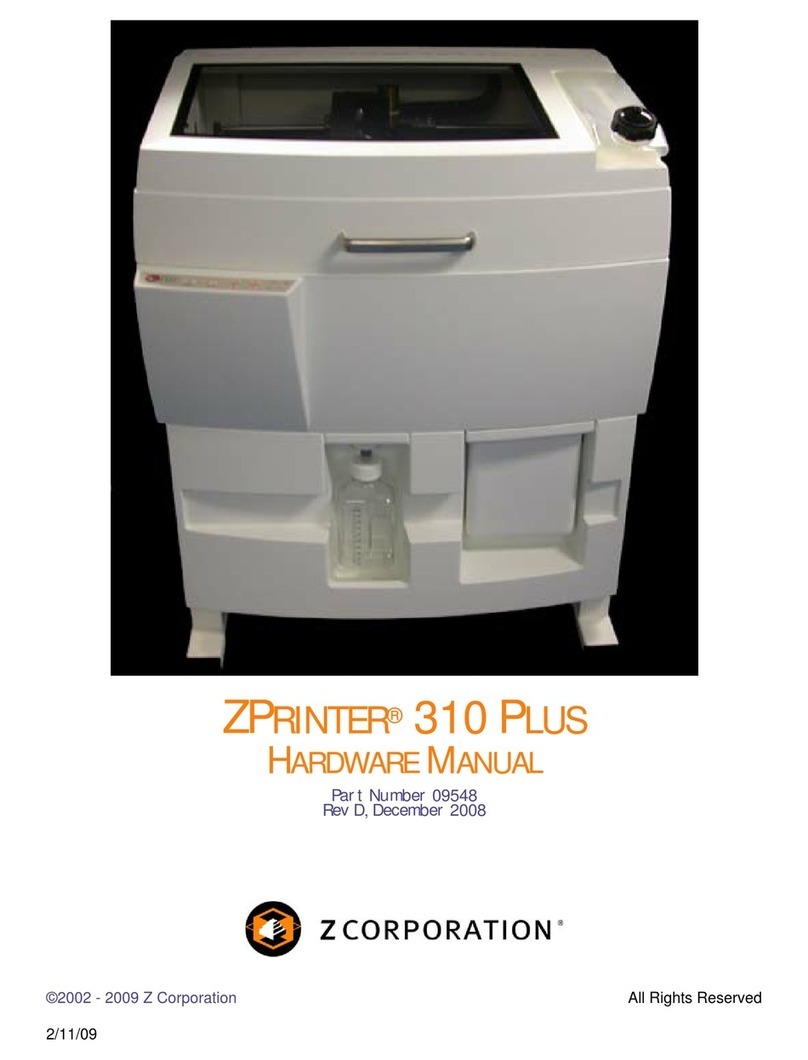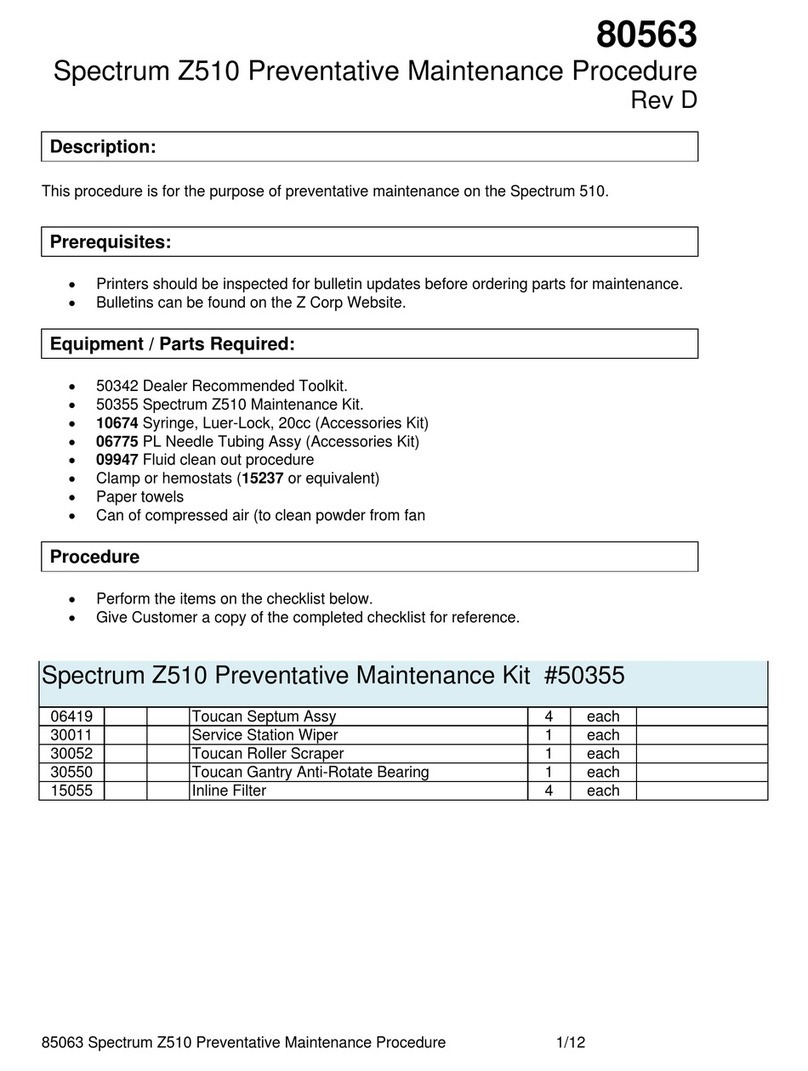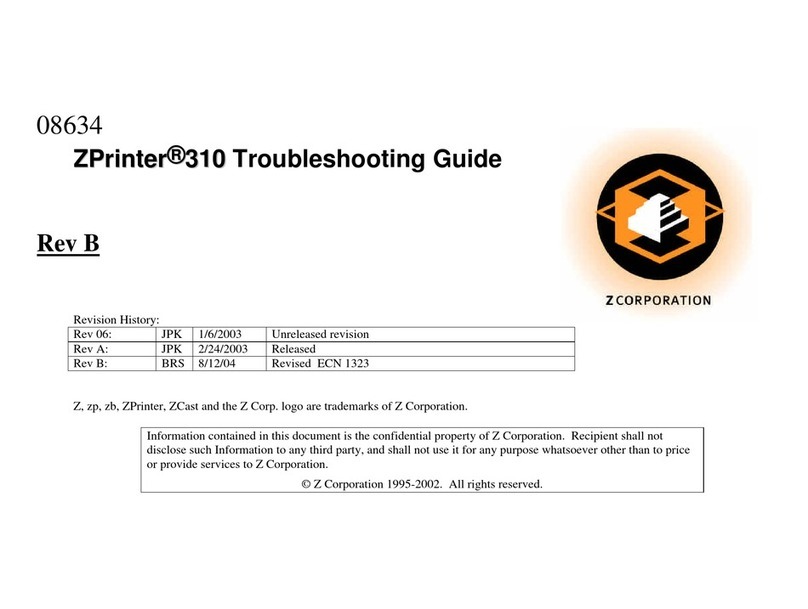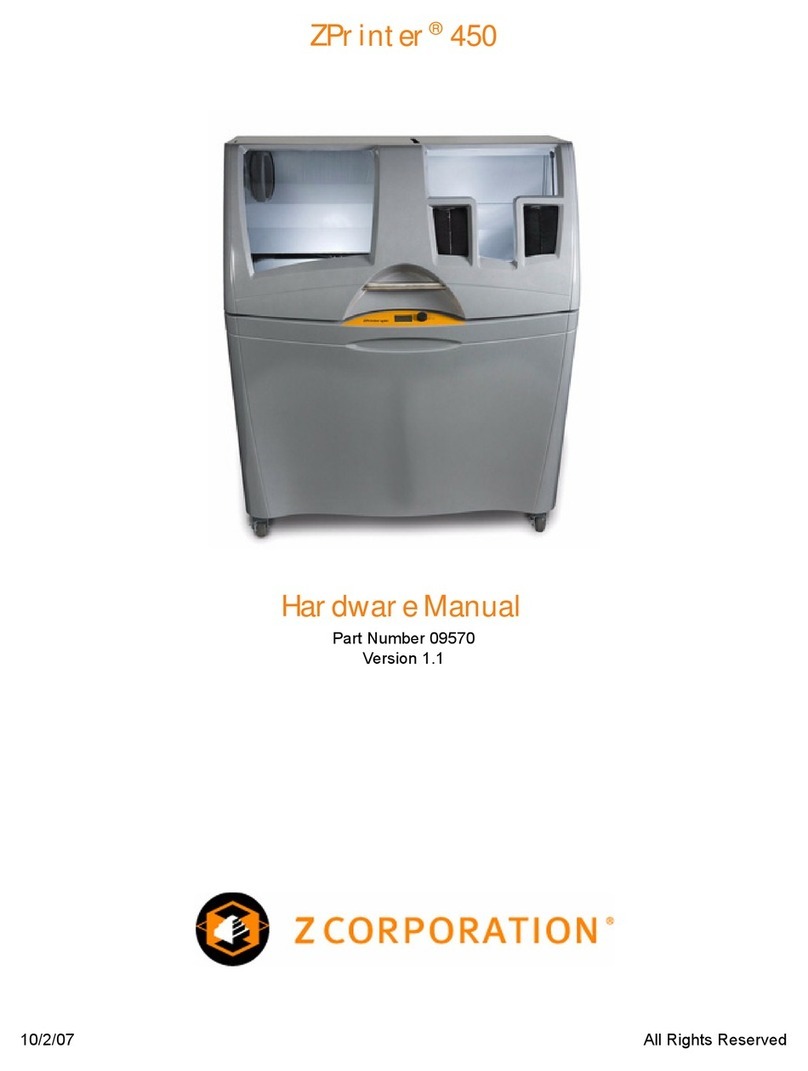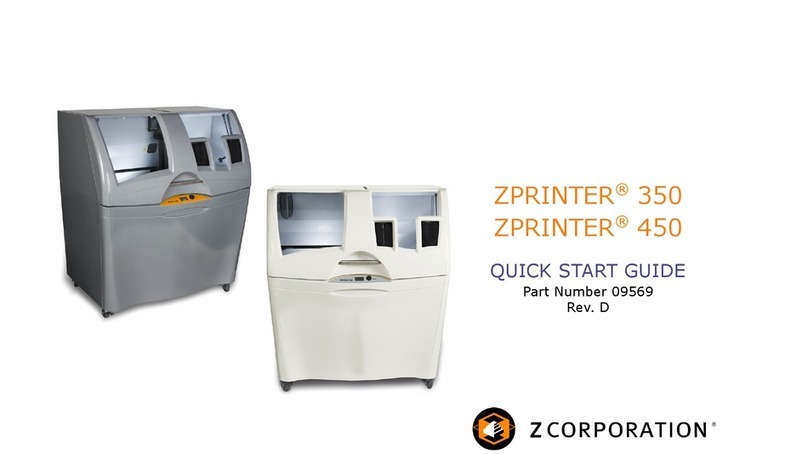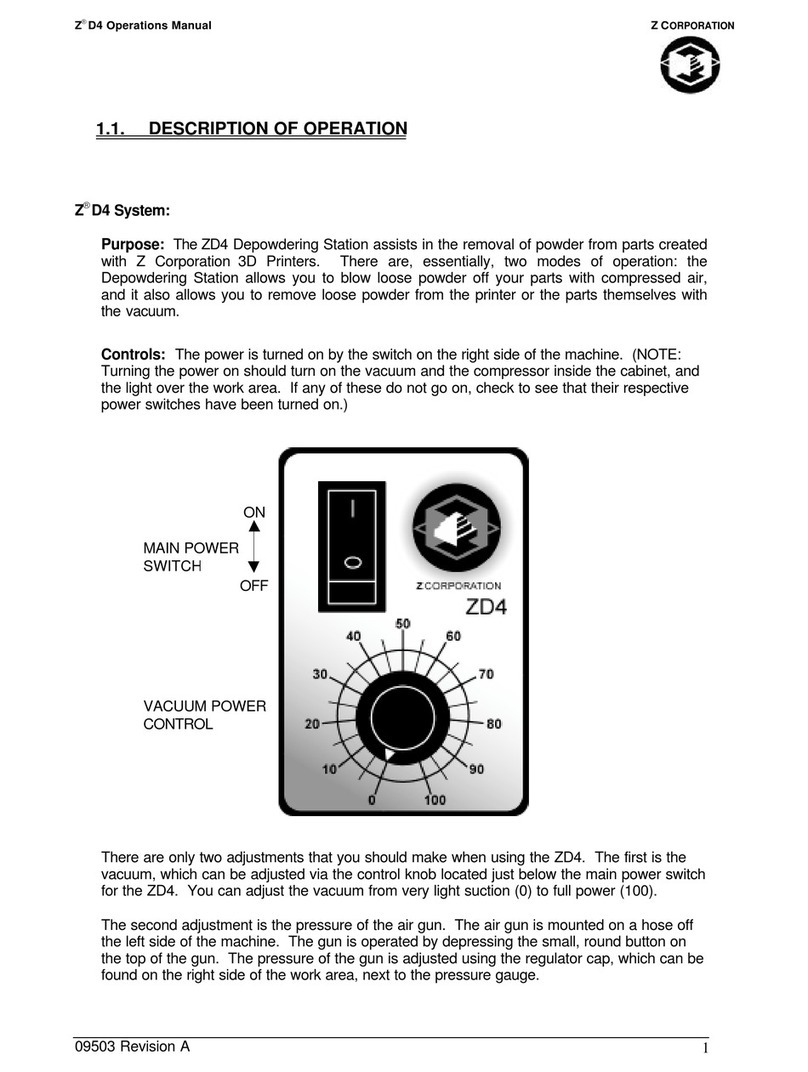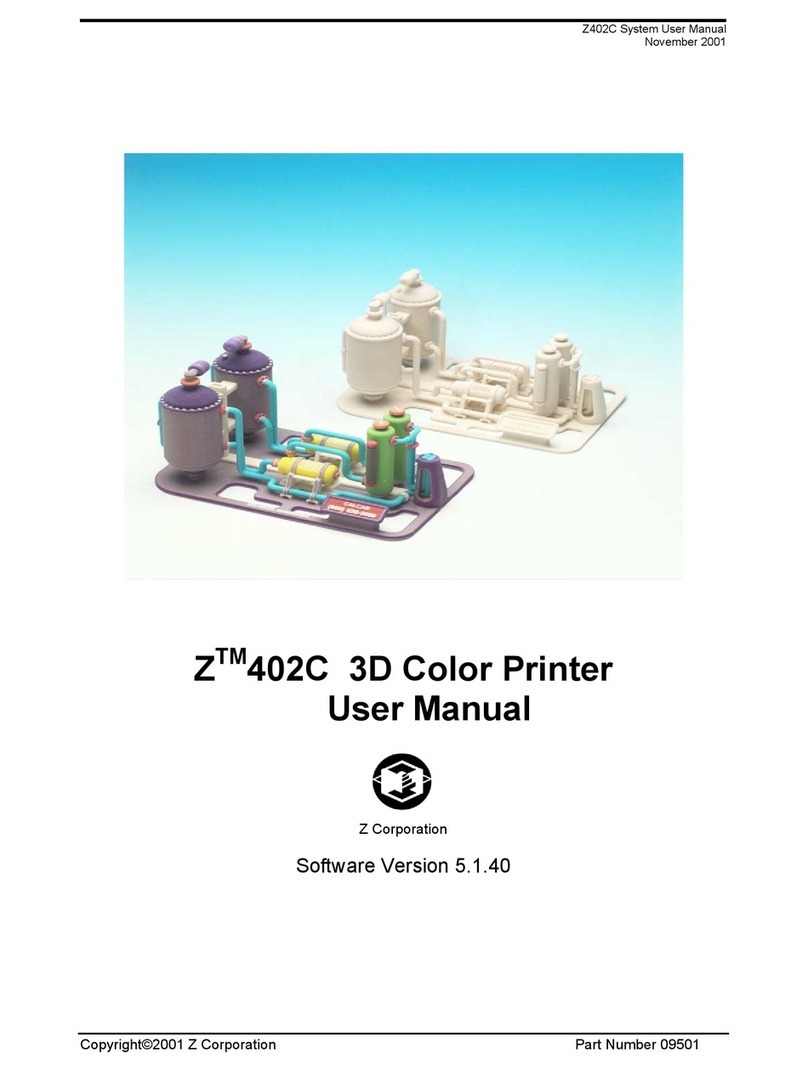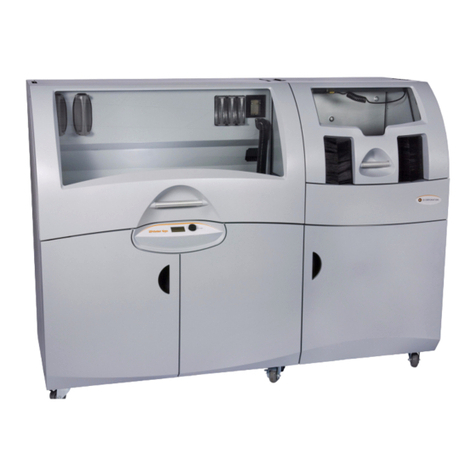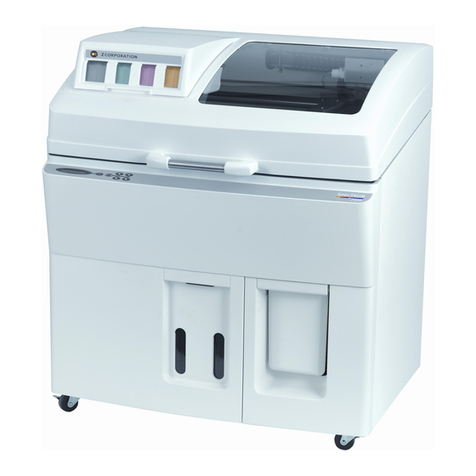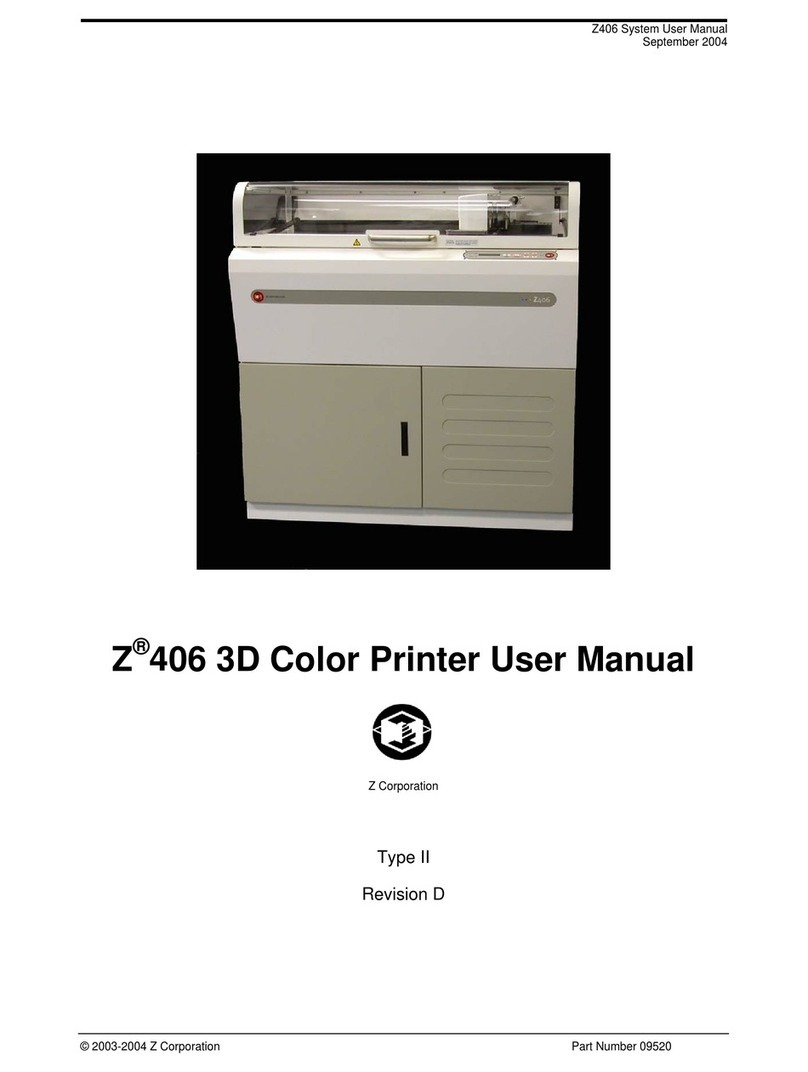
09538 Spectrum Z510 Quick Start Guide www.zcorp-users.com
To increase the strength of thin parts, you can decrease the layer thickness to 0.0035"
(0.089 mm) if you are using one of the zp®100 series (plaster-based) powder systems.
Then choose to override the saturation values. Input the saturation values used for
printing at 0.004" (0.102 mm). This increases the binder to powder ratio and wets more of
the resins in the powder system. As you increase the strength of the part in this manner
you are also inceasing the amount of time to dry the part. Use of the removable build
plate and oven drying the part are recommended.
Become familiar with where the parts are placed and how they are oriented in the build
box so you do not accidentally bump or brush against a fragile part during the
depowdering process.
When performing the gross depowdering (removal of excess powder in the build box) do
not plunge the vacuum nozzle into the powder bed. Begin at the outer perimeter of the
build box, slowly work your way into the build. Hold the tip of vacuum nozzle
approximately 0.25" (6.4 mm) to .375" (9.5 mm) away from the powder and allow the
vacuum to pull the powder up. Slanting the vacuum nozzle will enable you to control the
suction. This will decrease the chance of breaking a part that is hidden beneath the
surface of the powder.
While fine depowdering in the depowderer, always start with a low air pressure and
gradually increase the pressure as the fine details and features of the part become
visible. When the top and sides of the part are completely depowdered tilt the part onto
one of its sides. Handle the part carefully. The part may be fragile and brittle before
infiltration. If none of the sides of the part will be able to support the weight of the part
you can apply a small amount of resin or epoxy to strengthen it. You want to be careful
not to let any of the infiltrant come into contact with any unprinted powder that may still
be on the part. Let the infiltrant dry before continuing to depowder.
The removable build plate is an excellent tool for the new user. It allows you to quickly
remove the part from the build bed and begin printing again. The build plate also allows
the user to easily transport the part to the oven (at temperatures below 150oF or 66oC)
or the depowdering station without ever having to handle the part.
If you choose to use the removable build plate keep in mind that you want to orient the
parts so that the part does not collapse when powder flows out from the sides of the part
after the removable build plate is lifted from the build bed.
OVEN DRY THE PART
Although the part can be handled when it is not completely dried, the part reaches full
strength when dried. Placing the part in an oven at temperatures less than 200°F (93oC)
for 2-4 hours will dramatically increase the strength of the part. This is only
recommended for plaster-based powders. If using the removable build plate, remove the
part from the removable build plate before placing in the oven.
1.1.2 GROSS AND FINE DEPOWDERING
1.1.3 USE OF THE REMOVABLE BUILD PLATE
